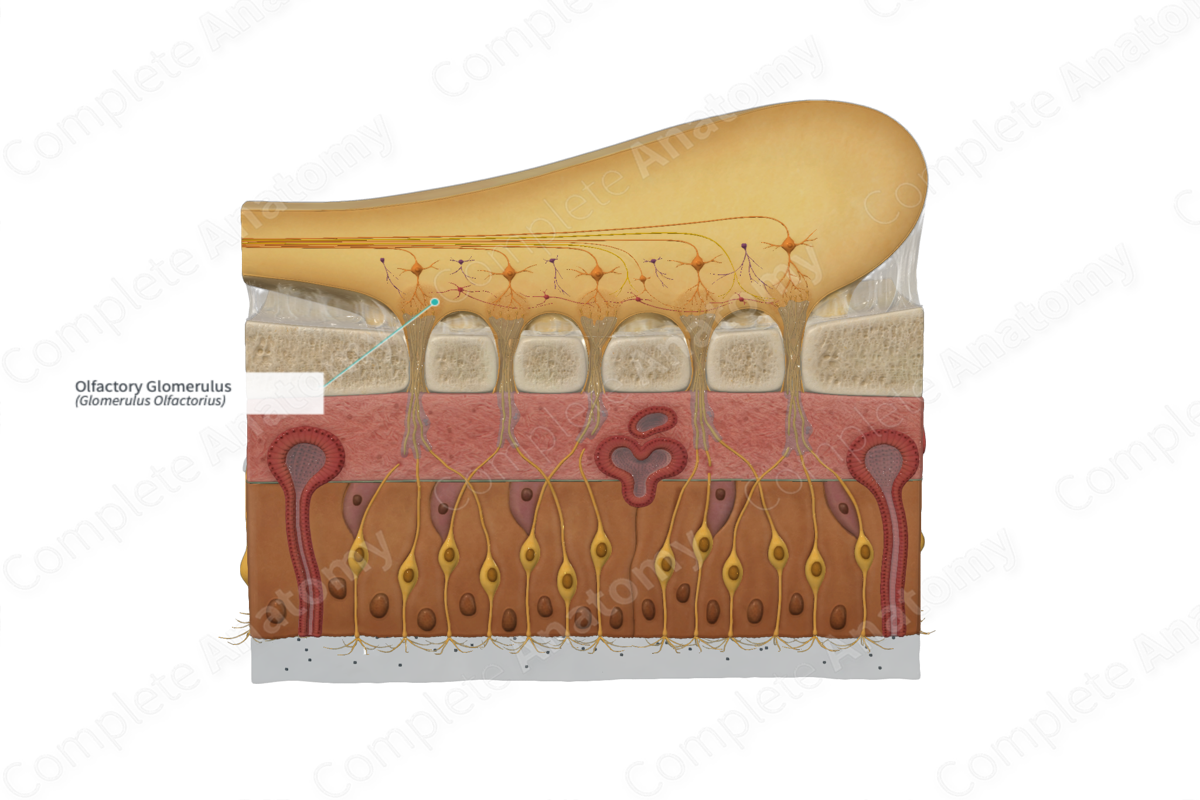
Quick Facts
The olfactory glomerulus is one of the small globular masses of dense neuropil in the olfactory bulb; it contains the first synapse in the olfactory pathway, and the axons of olfactory cells synapse here with dendrites primarily of mitral cells and tufted cells (Dorland, 2011).
Related parts of the anatomy
Structure and/or Key Features
The glomeruli are circular non-conspicuous areas, with diameters of about 150 μm, and are situated within the glomerular layer of the olfactory bulb (Barlow and Mollon, 1982).
Each glomerulus is a composite site of synapses, where incoming olfactory nerve fibers split and synapse with the dendrites of mitral, tufted, and periglomerular cells (Standring, 2016; Longstaff, 2005).
Glomeruli have odor specificity, since each of them receives nerve fibers from olfactory sensory cells that respond to the same category of odors. There are about 2000 glomeruli within each olfactory bulb, each of which receives the nerve fibers of up to 25,000 olfactory sensory cells (Longstaff, 2005).
The glomeruli are surrounded by the cell bodies of periglomerular cells. The dendritic branches of these periglomerular cells extend into the glomerulus (Barlow and Mollon, 1982).
Anatomical Relations
The glomeruli are situated within the glomerular layer of the olfactory bulb. The glomerular layer lies internal to the olfactory nerve layer and external to the external plexiform layer of the olfactory bulb (Barlow and Mollon, 1982).
Function
Glomeruli play a key role in odor specification and identification as each glomerulus responds to specific groups of odors.
Clinical Correlates
—Anosmia
References
Barlow, H. B. and Mollon, J. D. (1982) Senses. Cambridge Studies in Philosophy: Cambridge University Press.
Dorland, W. (2011) Dorland's Illustrated Medical Dictionary. 32nd edn. Philadelphia, USA: Elsevier Saunders.
Longstaff, A. (2005) Neuroscience. BIOS instant notes 2nd edition: Taylor & Francis.
Standring, S. (2016) Gray's Anatomy: The Anatomical Basis of Clinical Practice. Gray's Anatomy Series 41st edition: Elsevier Limited.
